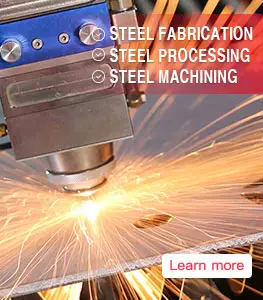Welcome to BBN Steel Materials Factory
Compare API 5L X70 and sa 516-70 carbon steel?

API 5L X70 pipeline steel and SA 516-70 carbon steel are two of the most commonly used materials in the oil and gas industry. Both are designed to withstand high pressure and extreme temperatures, making them ideal for use in pipelines and other critical applications. while they may appear similar on the surface, there are some key differences between these two types of carbon steel that can have a significant impact on their performance and suitability for different applications.
API 5L X70 pipeline steel that is commonly used in the oil and gas industry, especially for pipelines that transport petroleum and natural gas. It has a higher yield strength and tensile strength than traditional carbon steels, making it more resistant to fracture and better suited for use in harsh environments.
The chemical composition of API 5L X70 includes elements such as carbon, manganese, phosphorus, sulfur, silicon, and niobium. These elements help to improve the mechanical properties of the steel and enhance its corrosion resistance. The niobium content in particular acts as a grain refiner, helping to improve the toughness and weldability of the steel. API 5L X70 steel is typically produced using either the electric arc furnace (EAF) or basic oxygen furnace (BOF) processes. It can be supplied in various forms, including seamless and welded pipe, as well as plates and coils.
SA 516-70 boiler steel is a type of pressure vessel steel commonly used in the manufacturing of boilers and pressure vessels for use in a variety of industries, including oil and gas, chemical processing, and power generation. It has good mechanical properties and a high tensile strength, making it a popular choice for applications that require high-pressure resistance.
The chemical composition of SA 516-70 carbon steel includes elements such as carbon, manganese, sulfur, phosphorus, and silicon. It also contains trace amounts of other elements, such as copper, nickel, and chromium.
SA 516-70 carbon steel is typically produced using the BOF process, although it can also be produced using the electric arc furnace (EAF) process. It is available in various forms, including plates and sheets, as well as profiles and bars. Despite their similarities, there are several key differences between API 5L X70 and SA 516-70 carbon steel that can affect their performance and suitability for different applications.
1. The chemical composition of API 5L X70 and SA 516-70 carbon steel differ significantly. While both contain carbon and manganese, API 5L X70 contains additional elements such as phosphorus, sulfur, silicon, and niobium, which give it improved mechanical properties and corrosion resistance. Meanwhile, SA 516-70 carbon steel contains trace amounts of other elements such as copper, nickel, and chromium.
2. API 5L X70 has a higher yield strength than SA 516-70 boiler carbon steel. This makes it better suited for use in applications that require high-pressure resistance, such as pipelines for transporting petroleum and natural gas.
3. API 5L X70 also has a higher tensile strength than SA 516-70 carbon steel. This makes it more resistant to fracture and deformation, particularly at high temperatures.
4. API 5L X70 has better weldability than SA 516-70 carbon steel due to its lower carbon content and the presence of niobium, which acts as a grain refiner. This means that it can be easily welded and is less prone to cracking or other defects during the welding process.
5. API 5L X70 has better corrosion resistance than SA 516-70 carbon steel, thanks to its higher alloy content and the presence of elements like niobium, which form protective oxide layers on the surface of the steel. This makes it better suited for use in harsh environments, such as offshore oil and gas platforms.
.webp)
.webp)
.webp)
.webp)
.webp)
.webp)
.webp)
.webp)
.webp)



Leave a Message